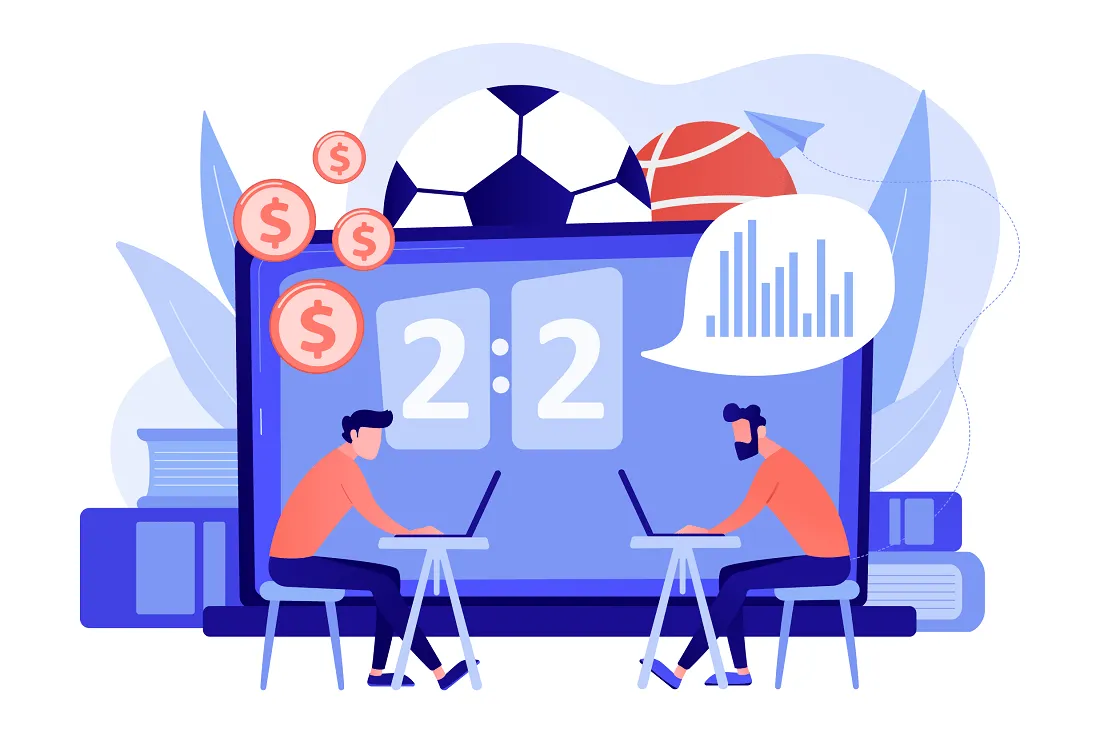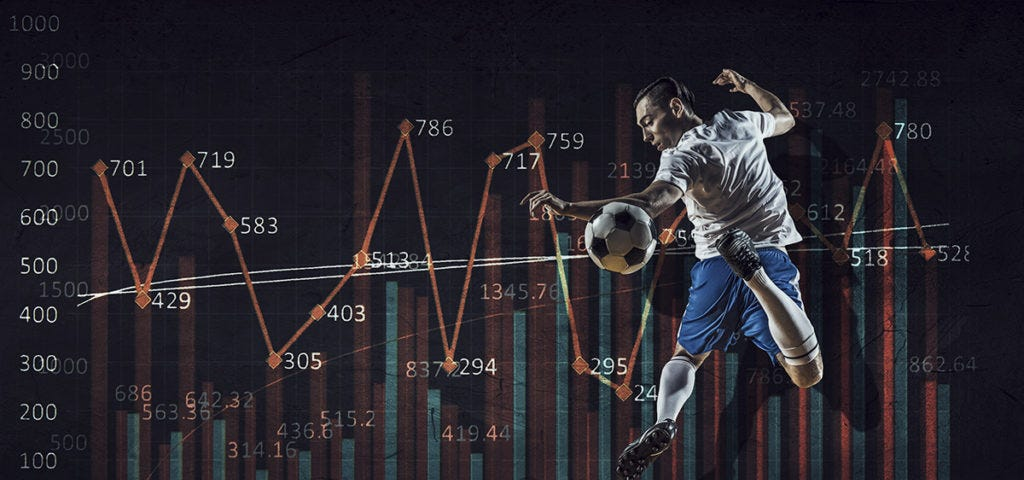Parisian mathematician Abraham de Moivre in the 18th century calculated the probability of a coin landing on heads. A bettor in the 21st century calculates the probability of “Aston Villa” winning against “Tottenham.” The only difference is the scale of the data. One used a coin, the other – dozens of factors. To understand how to make accurate sports predictions, it is necessary to go beyond intuition and embed oneself in the logic of data.
Why Intuition Fails
Intuitive choices are like throwing a dart blindfolded: if you’re lucky, you hit the target. The lack of a systematic approach creates an illusion of control. In sports, where randomness does not exclude patterns, such an approach quickly depletes the bankroll. According to the Behavioral Decision Making Group, 73% of intuitive bets are unprofitable by the 20th attempt.

How to Make Accurate Sports Predictions through Analysis
Without analysis, information turns into noise. Only a clear understanding of how to make accurate sports predictions allows organizing data into decisions. Each match is not just a game, but a combination of parameters: from tournament motivation to players’ minor injuries.
The most important factors for sports betting analysis:
- Current form of teams. The last 5-7 matches reveal trends: squad stability, effectiveness, playing style. For example, after the winter break, “Real Sociedad” only earned 3 points out of 15 – a critical indicator of a form slump.
- Athletes’ motivation. Matches for survival, the fight for the top 4, personal records – triggers that significantly increase the level of concentration. A team losing playoff chances often plays without pressure but also without extra effort.
- Analysis of sports events. Studying weather, referees, field conditions, stadium configuration. For example, “Juventus” scores fewer than two goals in 82% of home matches with humidity above 70%.
- Bookmakers’ odds. Do not reflect the actual probability but mirror market behavior. A sudden drop in the odds for an underdog may signal a mass insider betting.
Factors to Consider in Betting Forecasting
Considering only one parameter distorts the picture. Only a multidimensional approach creates a balanced judgment. A correct forecast is the result of synthesis, not exclusion.
Essential elements:
- Form. One cannot rely solely on the overall position in the table. For example, a club may be in 3rd place but have lost the last 3 matches in a row.
- External environment factors. Injuries, disqualifications, atmospheric pressure, flights, mid-season fatigue – all have an impact. The influence is hard to measure, but it must be taken into account.
- Micro-moments statistics. For example, 64% of “Arsenal’s” goals are scored after the 70th minute. This creates value in live betting.
Experts’ Opinion: Value, but Not Truth
Experts analyze but make mistakes. For example, in the 2012 Champions League final, almost 90% of analysts predicted Bayern Munich’s victory, but Chelsea won. To understand how to make accurate sports predictions, one must consider experts’ opinions as an additional source, not the ultimate truth. It is better to combine analytics with personal calculations.
Trends and Statistics: Hidden Patterns
Unobvious regularities often determine the outcome. Only 14% of FA Cup winners in 10 years won the final by more than one goal difference. This provides a strong signal for handicap and totals betting. Understanding trends requires constant monitoring. One cannot rely on year-old data – in sports, everything changes monthly.
How to Make Accurate Sports Predictions: Algorithm
To understand how to make accurate sports predictions, professional analysts use the following working scheme:
- Information Gathering: lineups, recent matches, interviews, tactical changes.
- Motivation Identification: analysis of tournament position, psychological attitudes, and conflicts of interest.
- Form Evaluation: tracking streaks, minor injuries, coaching changes.
- Statistical Comparison: shots, ball possession, corners – all for each match.
- Odds Checking: analyzing line dynamics, comparing odds from 3-5 bookmakers.
- Factor Synthesis: creating an outcome scenario based on all parameters.
- Adjustment on the Fly: changing the bet when new data emerges (live).
Understanding how to make accurate sports predictions is not the art of prediction but the skill of calculation. The winner is the one who reads between the lines of statistics. Bets without analysis turn into an expensive roulette game.
How to Analyze Sports Events for Betting
Analyzing sports events requires not a template approach but keen attention to details. Ignoring one factor can nullify even the most accurate outcome. To understand how to make accurate sports predictions, one must work with the field not as a game but as a system of variables.
Tactical Models and Formations
The 4-3-3 scheme against 3-5-2 is not just numbers. It determines the pace, ball control, corner kick probability, and even who will receive the first yellow card. Teams using high pressing often commit more fouls and create more chances.
Physical Parameters
Statistics on distance covered, intensity, accelerations – key to the real condition of players. A team with a total distance of less than 100 km per match loses in 76% of cases if the opponent covers over 112 km.
Analysis of Sports Betting: Accuracy Criteria
The diagnostic mechanism is based on precise input data. The quality of forecasting depends on the quality of this data.
For example, the absence of one key midfielder reduces the team’s performance by 0.7 goals. On average – data based on Serie A matches analysis over three seasons.
Optimal data sources:
- official databases (Opta, StatsPerform);
- advanced statistical platforms (Wyscout, InStat);
- specialized Telegram channels with insights;
- paid subscriptions of analysts with verified cases.
Reliable sources allow building outcomes based on real premises. Superficial infographics should not be used – it contains too much noise and too little depth.
Where Experts Go Wrong: Forecasters’ Fallacies
Even recognized analysts fall into the trap of cognitive biases. Players most often make mistakes by overestimating the home factor, ignoring the weather, and blindly trusting numbers.

To understand how to make accurate sports predictions, it is necessary to identify weaknesses even in acknowledged favorites.
Conclusion
How to make accurate sports predictions means connecting facts, figures, and motivational parameters into a unified system. Intuition makes mistakes, but analytics creates well-founded decisions. Only calculation turns a hobby into a systematic process, and emotions into a cool assessment of chances.
 en
en  ru
ru  de
de  ar
ar  es
es  nl
nl  hi
hi  fr
fr  it
it  pt
pt  el
el 



